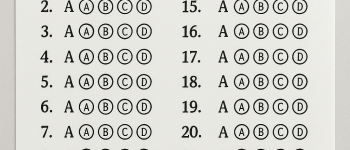Vice President of India
29th Jul 2025
Read

TABLE OF CONTENTS
- 1. Relevant Constitutional Articles (Articles 63-71, Part V)
On 21st July 2025, Jagdeep Dhankhar, the 14th Vice-President of India, resigned from his post citing health concerns, in accordance with Article 67(a) of the Constitution. His resignation was submitted to President Droupadi Murmu and took immediate effect.
Following his resignation, the Deputy Chairman of the Rajya Sabha will preside over the sessions of the Upper House until a new Vice-President is elected.
Constitutional Role of the Vice-President of India
1. Relevant Constitutional Articles (Articles 63-71, Part V)
Article 63 Mandates the existence of the office of the Vice-President of India
Article 64 Specifies that the Vice-President shall serve as the ex officio Chairman of the Rajya Sabha (Council of States).
Article 65 Empowers the Vice-President to perform the duties of the President during temporary vacancies or when the President is unable to discharge his functions due to absence or other reasons
Article 66 Lays down the procedure for the election of the Vice-President, who is chosen by an Electoral College comprising members of both the Lok Sabha and the Rajya Sabha. The election is conducted through the proportional representation system using the single transferable vote method.
Article 67 Provides that the Vice-President shall hold office for a term of five years, although they may resign earlier or be removed under the constitutional procedure.
Article 68 Deals with circumstances leading to a vacancy in the Vice-President's office, including resignation, death, or removal, and provides guidelines for conducting fresh elections.
Article 69 Prescribes the oath or affirmation that the Vice-President must take before entering office, administered by the President of India.
Article 70 Empowers Parliament to make provisions for the discharge of the President's functions in situations not covered by Articles 65 and 68.
Article 71 Covers matters related to election disputes or doubts concerning the Vice-President or President, assigning jurisdiction over such issues to the Supreme Court.
2. Election Process
• The Vice-President is elected indirectly, not by the general public.
• The Electoral College for this election comprises both elected and nominated members of the Lok Sabha and the Rajya Sabha.
• Members of State Legislative Assemblies do not take part in this election.
• The election is conducted through Proportional Representation by means of the Single Transferable Vote, with voting done by secret ballot.
Note: This is distinct from the Presidential Electoral College, which includes elected MLAs from states and Union Territories.
3. Eligibility Criteria
To contest for the post of Vice-President, a person must:
• Be a citizen of India
• Be at least 35 years of age
• Be qualified for election as a member of the Rajya Sabha
• Not hold any office of profit under the Union or State government or local bodies
Additional requirements include:
• A nomination endorsed by at least 20 proposers and 20 seconders
• A security deposit of Rs. 15,000, to be submitted with the Reserve Bank of India
4. Term and Vacancy
• The Vice-President serves a term of five years but can remain in office until a successor assumes charge.
• A vacancy in the office can occur due to:
o Completion of the term
o Resignation
o Death
o Removal
o Disqualification
o Annulment of election
• In the event of a vacancy, the election must be conducted at the earliest possible opportunity.
• The newly elected Vice-President holds office for a full term of five years from the date of taking charge.

5. Resignation and Removal
• The Vice-President may resign by submitting a letter to the President under Article 67(a).
• Removal does not require an impeachment process.
• A resolution for removal must:
o Be introduced in the Rajya Sabha with 14 days' prior notice
o Be passed by an effective majority (majority of the then members) of the Rajya Sabha
o Be agreed to by the Lok Sabha with a simple majority
Importantly, the Constitution does not specify any grounds for removal.
6. Powers and Functions
a) Ex-Officio Chairman of the Rajya Sabha
• The Vice-President presides over the Upper House, functioning similarly to the Speaker of the Lok Sabha.
• Responsible for maintaining order, allowing debates, and making rulings on parliamentary procedure.
This mirrors the role of the Vice-President of the United States, who presides over the U.S. Senate.
b) Acting President of India
The Vice-President discharges the duties of the President:
• During a temporary vacancy (due to death, resignation, removal, or otherwise)
• When the President is unable to discharge duties due to absence or illness
• The Vice-President can act as President for a maximum of six months, during which a new President must be elected.
• During this time, the Deputy Chairman of the Rajya Sabha presides over its sessions, as the Vice-President cannot perform both roles simultaneously.
7. Emoluments and Privileges
• The Constitution does not prescribe a specific salary for the Vice-President.
• The Vice-President receives a salary in his capacity as Chairman of the Rajya Sabha, along with:
o Daily allowances
o Official residence
o Medical care
o Travel and other perks
• When functioning as President, the Vice-President receives the salary and privileges accorded to the President.
Significance of the Vice-President's Role
1. Constitutional Balance:
The Vice-President acts as a bridge between the legislature and executive, ensuring smooth constitutional functioning.
2. Legislative Authority:
As Rajya Sabha Chairman, the Vice-President ensures orderly proceedings and enforces procedural discipline in the Upper House.
3. Emergency Succession:
The Vice-President provides institutional continuity by stepping in as Acting President during emergencies.
4. Comparative Analysis:
Like in the U.S. system, the Indian Vice-President combines the functions of a legislative head and a standby executive authority.
5. Expected Political Neutrality:
Although constitutionally non-partisan, the role can become politically sensitive. Notably, in December 2024, a no-confidence motion was submitted by the Opposition against Vice-President Dhankhar, alleging partisan conduct. This was an unprecedented move in India's parliamentary history.
Contextual Timeline of Jagdeep Dhankhar's Tenure
• December 2024: Faced a removal resolution brought by the Opposition, questioning his neutrality.
• March 2025: Hospitalised at AIIMS for cardiac concerns; discharged after three days.
• June 2025: Collapsed at a public event in Uttarakhand.
• July 2025: Resigned citing prolonged health issues, becoming only the third Vice-President in Indian history to resign before completing the term.
What Happens Next?
• The Deputy Chairman of the Rajya Sabha will preside over its proceedings until a new Vice-President is elected.
• The Election Commission will notify the schedule and oversee the election process.
• Members of both Houses of Parliament, including nominated members, will participate in voting.
• Political parties are expected to soon begin candidate selection and campaigning.
Feel free to use images in our website by simply providing a source link to the page they are taken from.
-- Epoch IAS
Check These Categories
- Polity and Governance
- Important Bills and Acts
- International Relations
- International Organisations
- Places in News
- Indian Economy
- Environment
- Geography
- Species in News
- Protected Areas in News
- Science & Technology
- Government Schemes & Programmes
- History and Art & Culture
- Miscellaneous
- Index & Reports
- Defence Exercises
- Security
Latest Posts
Discover programs designed to build your skills and accelerate your career.
Share views on Vice President of India
Please keep your views respectful and not include any anchors, promotional content or obscene words in them. Such comments will be definitely removed and your IP be blocked for future purpose.
 29th Jul 2025
29th Jul 2025
 9th Aug 2025
9th Aug 2025
 29th Jul 2025
29th Jul 2025
 27th Aug 2025
27th Aug 2025
 29th Jul 2025
29th Jul 2025
.png) 8th Aug 2025
8th Aug 2025
